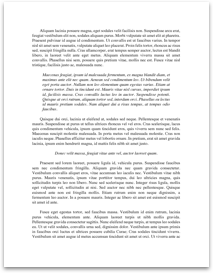Bus 36 Q5 Wk 7uiz 6 Chapter 9 - All Possible Questions
Submitted by: Submitted by strstack
Views: 128
Words: 1971
Pages: 8
Category: Music and Cinema
Date Submitted: 07/30/2014 02:59 AM
BUS 36 Q5 WK 7uiz 6 Chapter 9 - All Possible Questions
To Purchase Click Link Below:
http://strtutorials.com/BUS-365-WK-7-Quiz-6-Chapter-9-All-Possible-Questions-BUS3658.htm
BUS 365 WK 7 Quiz 6 Chapter 9 - All Possible Questions
Chapter 09
Multiple Choice
1. __________ are planning and control systems that capture and record all of the company’s data from operations, and perform the routine transactions needed to conduct business on an ongoing day-to-day basis.
a) Operational information systems
b) Strategic information systems
c) Databases
d) Inter-organizational systems
2. Why did the largest Scandinavian food retailer group, Axfood AB, invest 200 million SEK (20.4 million Euros or US$25.6 million) in an IT platform?
a) To develop multi-cultural e-commerce capabilities
b) To fully integrate its diverse IT infrastructure to coordinate and connect its operations
c) To implement advanced technologies, including tags, RFID, and social media
d) To develop order fulfillment and logistics capabilities
3. Why are the three levels of management and decision making often modeled as a pyramid? .
a) To show the importance of senior management decision making on the organization.
b) To show the importance of the decisions made at each management level.
c) To show the hierarchy of the management levels.
d) All of the above.
4. Each level of management has its own _____.
a) data needs
b) decision making responsibilities
c) time horizons
d) All of the above
5. Strategic level decisions are visionary and future-oriented. What types of data are specifically required for these decisions?
a) Real-time transactional and POS data.
b) Internal data sales about inventory levels, orders, and customer support.
c) External and internal data that has a one to three year time horizon.
d) External data about the economy, competitors, and business trends.
6. What types of data are specifically required for decisions made at the managerial...
More like this
- Bus 36 Q5 Wk 7Uiz 6 Chapter 9 - All Possible Questions
- Bus 409 Week 2 Quiz 1 - All Possible Questions
- Bus 520 Midterm And Final Exam - All Possible Questions
- Bus 230 Wk 6 Quiz Chapter 7 - All Possible Questions
- Possible-Questions-Bus3098.Htm Bus 309 Wk 8 Quiz 7 Chapter 8 - All Possible Questions
- Bus 309 Wk 11 Quiz 10 Chapter 11 - All Possible Questions
- Bus 335 Wk 5 Quiz 4 Chapter 5,6 - All Possible Questions
- Bus 335 Wk 6 Quiz 5 Chapter 7 - All Possible Questions
- Bus 335 Wk 7 Quiz 6 Chapter 8,9 - All Possible Questions
- Bus 335 Wk 9 Quiz 4 Chapter 11,12 - All Possible Questions
